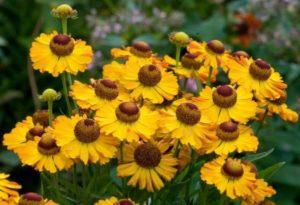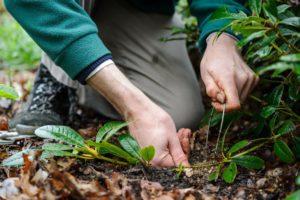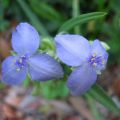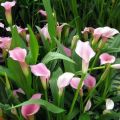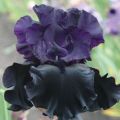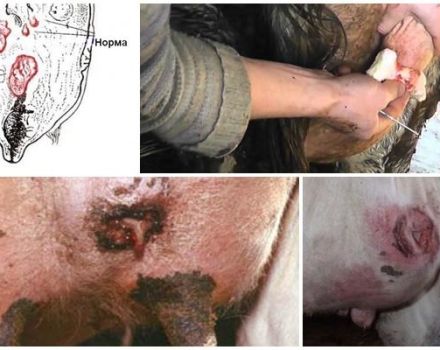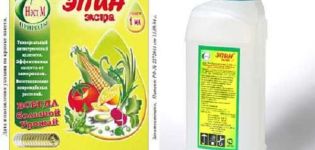Planting and caring for Brunner in the open field, description of varieties and species
Garden owners have recently been increasingly resorting to landscape design to ennoble the site, decorating it with decorative flowers, the most common among which has become brunner. This compact shrub pleases the eye with tenderness and lightness of flowers, unobtrusive and pleasant aroma. In addition, Brunner is unpretentious and does not require special care, and planting a plant does not take much time.
Description and features
Brunner is a perennial flowering shrub that can grow in one place without replanting for 15 years, forming dense double thickets. The height of the plant is 15-60 centimeters, the leaves are heart-shaped, on high, lowered petioles. The inflorescences are blue, about 10 millimeters in diameter, reminiscent of forget-me-nots, hence the second name of Brunner - forget-me-not, the only difference is that the core of the Brunner is white.
Outdoor cultivation
For breeding brunners in the garden, you should choose a shady area, devoid of constant direct rays, which are detrimental to flowering shrubs. The best decision when choosing a place for planting is when the sun is shining in the first half of the day, and the shade falls in the second half.
Landing dates
Planting should be carried out from late July to early August, choosing the afternoon for this, preferably in cloudy weather. Spring planting is prohibited, since during this period the bush is susceptible to diseases.
Selection and preparation of seed
When buying Brunner sprouts, it is worth paying attention to container options, the further planting of which is much easier. Shoots with an open root system require additional care:
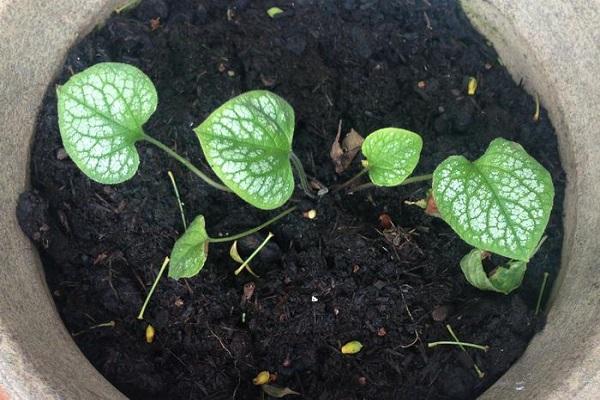
- the plant should be planted immediately - either in the soil or in a pot with soil;
- remove large leaves to reduce evaporation;
- spraying or wrapping in a film is detrimental to the sprouts, since Brunner loves air and is susceptible to moisture.
Any planting material should be free from external damage, look strong and healthy.
Soil preparation
The choice and preparation of the soil depends on the type of planting material:
- a large-leaved plant prefers soil of medium moisture, looseness and fertility, so the soil should be dug up. Top dressing is not necessary so as not to provoke abundant foliage growth;
- Siberian is best planted on clay and wet soils, which can not be weeded, controlling only the moisture level.
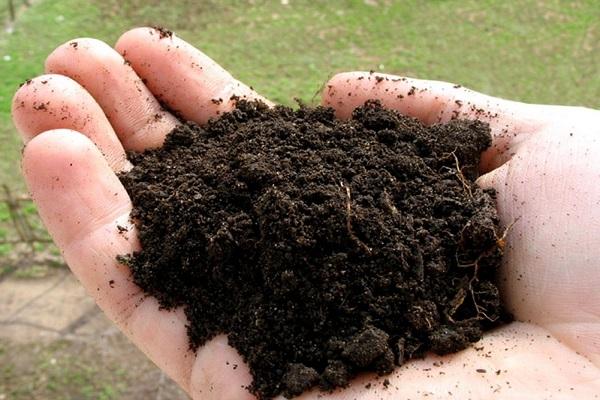
Landing scheme
The easiest way to plant a plant is by dividing the root, which will give youth and strength to the bush:
- after flowering, cut off the ground part, leaving 10 centimeters;
- dig up the roots and rinse thoroughly;
- remove old, rotten and painful ones;
- Divide the main root into parts with a sharp knife so that each has a kidney;
- bury parts of the roots in the planting holes, leaving the root collar;
- water thoroughly and mulch.
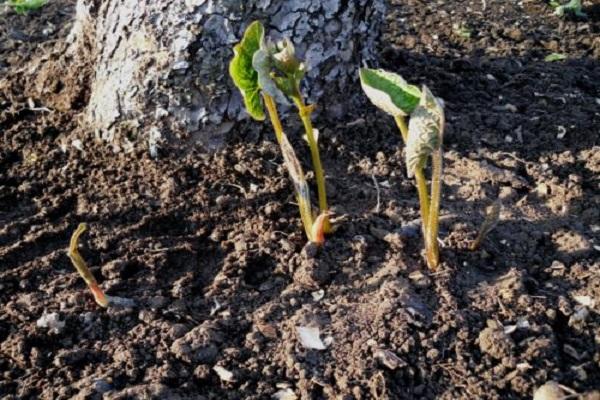
Care
Like any plant, the Brunner needs some care.
Watering
Regular watering is only necessary if the plant is planted in the sun or the summer is too hot. In other cases, watering is enough several times per season.
Loosening and weeding
Weeding of an adult Brunner depends on the species, while young bushes should be weeded during transplantation and reproduction. A large-leaved plant needs regular protection from weeds, while a Siberian one does not, since it grows strongly, not allowing weed grass to appear.
Important! In addition to weeds, the Siberian Brunner can also strangle other crops, so you should not forget about the space for its growth.
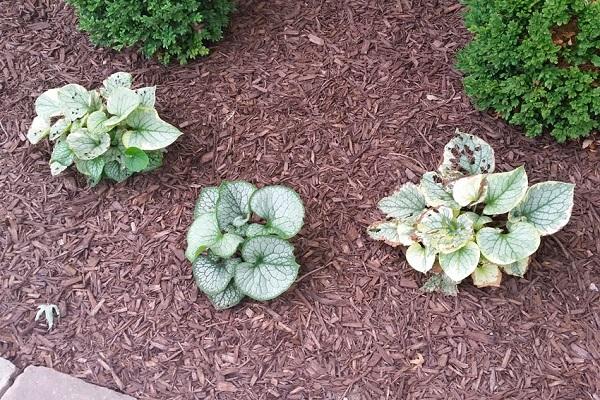
Loosening is not recommended for all species, as the roots of the bush are close to the surface and can be damaged.
Top dressing
In the spring, immediately after the snow melts, the soil must be fertilized with mineral fertilizing, scattering the granules over the garden bed. From organic fertilizers, you should choose a manure infusion, which is applied once a month.
Diseases and pests
During a rainy summer or an excess of moisture in the soil, the Brunner may develop powdery mildew or brown spot. To fight the fungus, Bordeaux mixture or Fitosporin is suitable, as well as the complete removal of all infected parts. Of the parasites, the shrub is attacked by aphids or whiteflies, in the fight against which chemical or folk remedies will help.

Preparing for winter
Wintering brunner does not involve any particular difficulties, since the plant is frost-resistant:
- leaves that have not fallen off should be removed yourself;
- in a harsh winter, the soil should be mulched with humus or compost; in other cases, shelter is not needed;
- with the warming of the shelter, it is necessary to remove and slightly loosen the soil, keeping in mind the roots at the surface.
Transfer
The transplant is carried out no more than once every 10 years, in August. Dig up the bed and fertilize, place a drainage layer at the bottom of the planting pit. After that, dig up the plant and transfer it to a new place, sprinkle it with earth and tamp it thoroughly. Water the transplanted bush and add sawdust mulch.
Reproduction
It is possible to divide the plant in several ways.
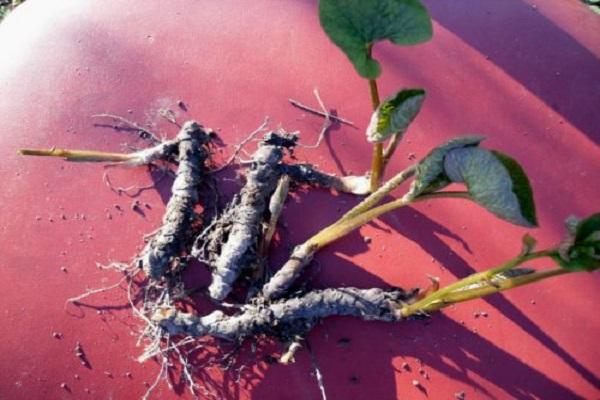
Seeds
Self-seeding of the bush does not occur often. Seeds ripen by the end of July, then 4-month stratification is required. Landing occurs in the winter.
Dividing the bush
As already mentioned, for the root division of the bush, you need to prune, rinse and clean the roots with further division and planting.
Kinds
Brunner is divided into several types.
Large-leaved
Height - 40 centimeters. Stems are lowered. Leaves are heart-shaped, pointed, dark green. The flowers are dark blue with a white center. The diameter is about 7 millimeters. Bloom - from mid-April to mid-May. Re-flowering in autumn is possible.
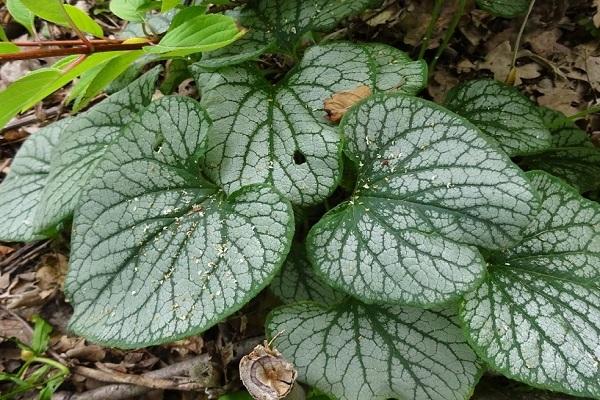
Siberian
Height - 60 centimeters. Stems - solitary, drooping, growing in thickets. Leaves: basal - heart-shaped; on stems - lanceolate. The flowers are dark blue with a white heart. Diameter - 5 millimeters. Flowering - from late May to late June. From mid-August, landscaping takes place again after temporary drying.
Eastern
It is not used in horticulture as it is a wild plant.
Variegated
As a separate type of plant is absent, but many varieties are called that for colorful leaves.
Popular varieties
Consider the most commonly cultivated varieties in gardens, descended from the large-leaved Brunner species.
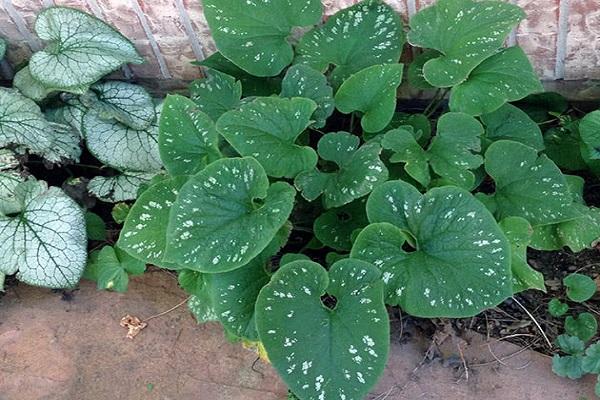
Millennium Zilber
Differences: gray-white spots on greenery near the edge.
Jack Frost
Height: 60 centimeters. Differences: silver leaf with green veins. It is frost-resistant and needs constant moisture.
Hudspan Cream
Differences: wide, long, about 15 centimeters, a sheet, framed with a white-beige border.
Langtriz
Differences: flowers - light blue; leaves - emerald, with silver splashes.

Variegata
Or Variegata. Height: 35 centimeters. Differences: the dark green color of the foliage smoothly turns into white. Does not like direct sunlight, loses greenery in drought.
Looking Glass
Height: 20-30 centimeters. Differences: leaves - silver; the flowers are pale blue. Resistant to fungi, likes partial shade.
Kings Ransom
Height: 40-55 centimeters. Differences: the leaves are large, light gray, with dark green veins and a beige border. Flowering period: 2 months, from April.
Important! Re-flowering in autumn is possible, but the inflorescences should be removed so as not to deplete the bush before wintering.
Silver Hut
Height: 40 centimeters. Differences: the leaves are silver, with a green border and veins. Not afraid of direct sunlight and high humidity.
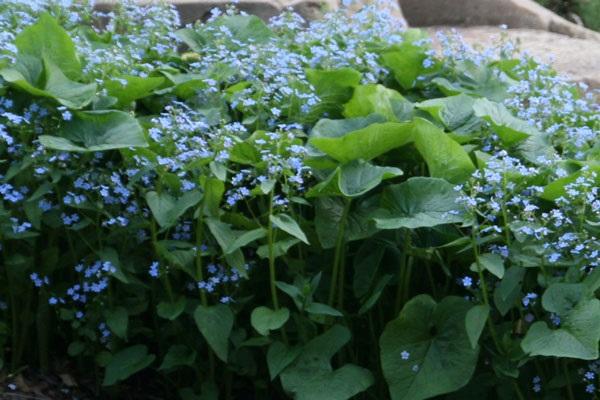
Using
Consider the use of brunner in various fields.
Medicine
Brunner's plant is not only beautiful, but also useful, as evidenced by its use in folk methods of treatment.
Beneficial features
In folk medicine, the ground part of the Siberian bush collected during flowering is used, which is subsequently dried, and then infusions or decoctions are prepared to help with inflammatory processes, high temperatures, fever or constipation.
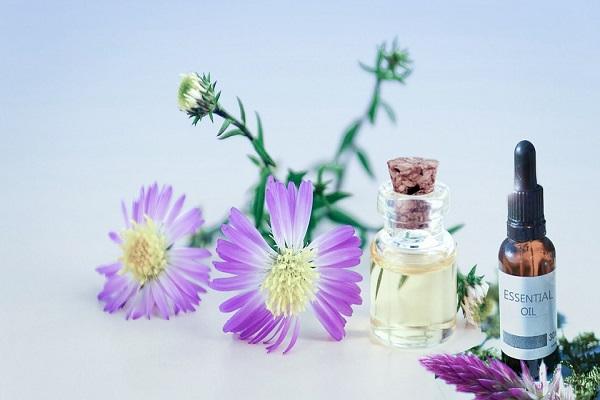
Contraindications
Before using infusions or decoctions, you should consult your doctor to avoid individual intolerance.
Landscape design
Brunner is used to decorate borders, the plant goes well with stones and reservoirs, as well as other decorative flowering shrubs. In addition, the bush can be planted as a hedge, to decorate an alpine hill or a multi-tiered flower bed with it..
